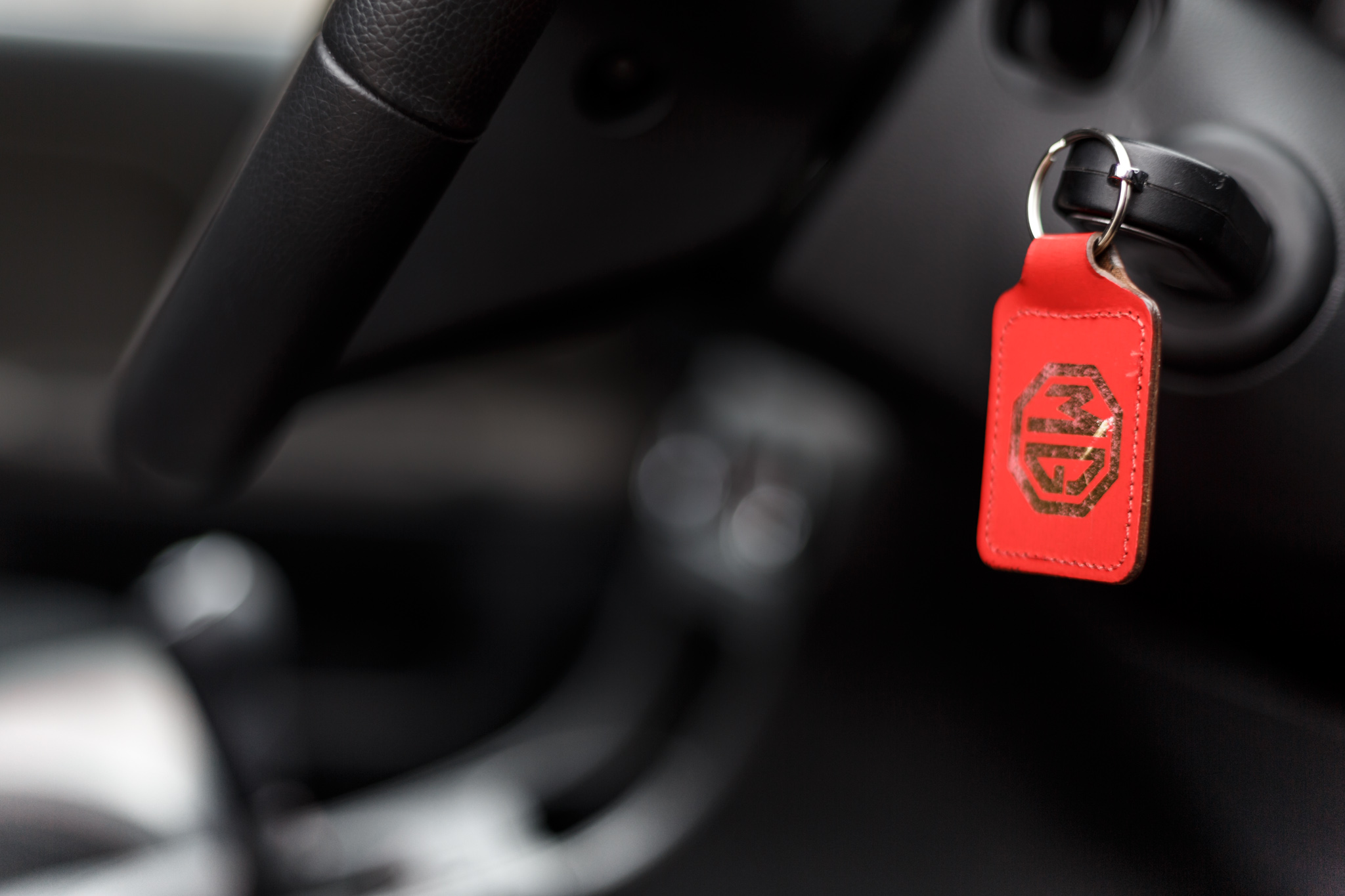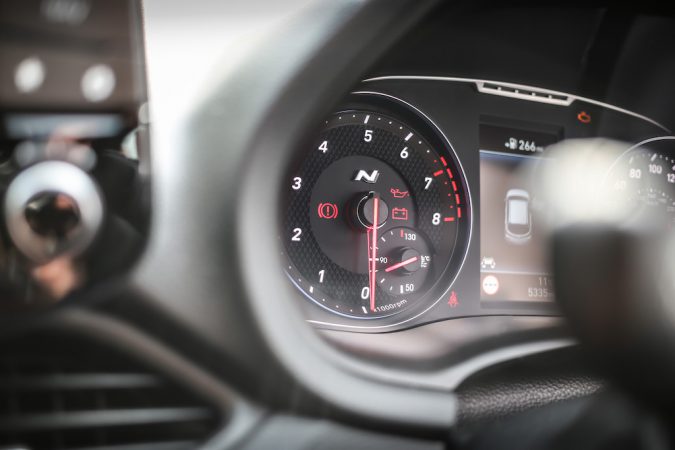An automobile is a very complex machine, and even just the process of starting it up in the morning is an intricate dance. Fuel is pumped into the engine, as ignition coils begin charging up. Air rushes in, as it mixes with the fuel and gets compressed, in before a spark ignites them into controlled mini explosions, cranking the engine to life. But, why does it matter for an ignition switch replacement?
Well, that’s because at the base of it all, and the trigger for this series of actions to take place, is that ignition switch. At your fingertips, slotting your key and turning it is the first step to getting any vehicle to start. Without an ignition switch, you won’t be able to start your car, as the engine can’t tell when it’s ready to wake up from hibernation. Yet, we don’t often worry about those, do we?
We use the ignition switch so much, that turning your car keys as you head off to work has become second nature. But what happens when that ignition switch fails? Moreover, what can you do to fix it? Do you need to pay up for an ignition switch replacement? Well, we aim to try and answer your burning questions, as well as discuss how much an ignition switch replacement costs…
What Do You Need To Know About The Ignition Switch?
First and foremost, it’s better that we understand what the component in question is before we can move on to discussing an ignition switch replacement. At the very genesis of a car’s already intricate ignition system, there’s the ignition switch. It’s often located – as you might already be familiar – on or around the steering column. There’s a practical reason for this, and it has to do with security.
Without a key inside the ignition, the switch can lock the steering wheel from rotating. This is just in case someone tries to steal your car, or tow it away without you knowing about it. Additionally, the ignition switch enables you to seamlessly turn on your car’s electrics in two distinct modes. I’m sure you already know what these are, and you can access them by turning the key in two positions:
- Its primary function is essentially the key to getting your car started. Upon activating the ignition switch, the entire ignition system is powered up and ready to crank. These include components such as the starter motor and solenoid, ignition coil, and spark plugs. This primary system is significantly stronger and requires a more potent boost of electricity from the batteries to work.
- The secondary function, meanwhile, could only slowly trickle away charge from the battery. This is the same system that keeps your car’s internal clock running. Elsewhere, turning your car keys into this secondary position turns on all the electrical accessories. Without the engine running, it allows you to listen to your radio, or enjoy a cold breeze from the air conditioner.
What Else Does Your Car’s Ignition Switch Do?
Speaking of positions, most vehicles have four different positions where you can turn into when slotting the keys into the ignition switch:
- Off/Lock (I) – This is the default first position, and it’s where you insert the keys after getting into your car. It doesn’t power anything, other than letting you place the keys into the ignition switch and then rotating it clockwise to switch it on.
- Accessory/Acc. (II) – “Acc” is an abbreviation of “accessory”. As we mentioned earlier, turning the key into this position is what turns on those secondary electric functions. Here, the battery can power the radio, air-conditioning, powered seats, power windows, and so on.
- On/Ignition (III) – This third position is when you ready up the car for ignition. By rotating the keys into the “On” or “Ignition” position, all your car’s electronic accessories turn on. Here, you can no longer remove the keys anymore, without turning it back to “Lock”.
- Start (IV) – When turning the key to “Start”, this will finally crank up the engine. With the ignition system readied up and your electrics flowing, you twist and hold for a brief moment until the engine crank. As you already know, you can’t leave the keys stuck in the “Start” position for too long, as doing so could damage the starter motor.
Are There Any Security Features With Your Car’s Ignition Switch?
Of course, newer cars today no longer have keys and an old-fashioned barrel-styled ignition switch. To start them, all you need is to have the keyless fob near enough or inside the vehicle, and you can press a button to start it up. These days, these buttons ordinarily have two positions. Pressing it just briefly once will turn on the accessories in your car. However, many already do this automatically.
If you want to start it up, then you’ll need to have one foot on the brake pedal, and then press and hold the starter button for a bit longer as the engine cranks into life. This is a much more convenient solution. For now, though, we’ll stick with good old keys. There’s yet another practical function of the ignition switch that we haven’t yet talked about, and that’s its role in improving security.
Car keys, after all, were first invented to prevent car theft. Each person had to have their own key for starting up their cars, as they would trying to get into their homes. In most cars since the 1980s, you’d have a key fob. Unlocking it there would communicate wirelessly with to signal the ignition switch that you are indeed the owner, and it’s safe to crank the motor.
If you don’t have a fob, then it’s likely that the engine still has an immobilizer system. Once the key slots in, this immobilizer reads the microchip or transponder located inside the key or key fob, and then senses if it’s okay to start the car up. Otherwise, or if there isn’t a signal, the immobilizer will, as its name suggests, immobilize the engine, and prevent it from starting up.
What Are The Symptoms That You Need To Consider An Ignition Switch Replacement?
Ordinarily, you’ll never have to worry about an ignition switch replacement. It’s one of those items in a car that could easily last the lifetime of the vehicle itself, without much need for maintenance or babying. However, these ignition switches can fail, and mainly due to design flaws. General Motors is one example, which had just recently been caught in a debacle concerning its ignition systems.
Multiple recalls followed, as the defective design in its ignition switches proved deadly. The switches could turn the engine, airbags, as well as other safety systems off while you’re in the middle of a drive. Thankfully, most other non-GM vehicles aren’t likely to suffer such hazardous side effects of faulty ignition switches. Yet, it reminds us of the importance of an ignition switch replacement.
Most of the symptoms of you needing an urgent ignition switch replacement are quite noticeable. So, here’s what you need to look out for if your ignition switch is running awry…
1. Your Key Doesn’t Turn
As you slot the key into the ignition, it should turn into those aforementioned positions with ease. If you find that the ignition switch is actively stuck and preventing you from turning the key, then you have a problem. In this situation, only an ignition switch replacement is going to help you.
Often, this is caused by excessive wear or damage inside the barrel of the ignition switch. This could happen, for example, if you’re used to slotting the wrong key into the barrel. Or, if your car’s ignition switch had been targeted by thieves before. This damage could wear out the alignment.
In short, it means that you can’t fully get the key in, and the switch can’t unlock itself properly. You may notice, at first, that the key is a bit hard to get in. Over time, it gets worse until the key doesn’t even go in. Alternatively, you might be able to slot it in with some difficulty, but it can’t turn.
2. The Car Won’t Start
Apart from a sticky switch that won’t let you slot or turn the key into place, your car might not start at all. Granted, your car not starting could be caused by numerous other problems, not limited to just a bad ignition switch. What you need to pay attention to, are the sounds.
Let’s say you turn the key, and there’s not a single sound to be heard from the engine. In this case, it means that your car’s starter motor isn’t working, and can’t crank the engine. But what if you hear a rapid clicking or chattering sound? Those fast clicks are the sound emitted by the starter motor.
It means that the starter is trying to crank, but there’s an electrical issue. A dead battery or a faulty alternator can’t provide sufficient electricity to start the engine up. In the case of an ignition switch, either one of those scenarios could be possible.
If you can’t hear anything after turning the key, there could be damage or some blockage within the electrical system. Otherwise, a somewhat faulty ignition switch might induce your car to eventually start. However, it would repeatedly fail to crank the engine to life for long.
3. Your Accessories Won’t Turn On
Another sign that you may need an ignition switch replacement is when you turn your key, but the interior accessories fail to switch on. Your car won’t naturally enable the radio or aircon to just keep working without the key or your input, for fear of draining the battery dry.
So, and if you rotate your key into the “Acc” position, but none of the accessories are functioning, it could point to a problem with the ignition switch. It may not have unlocked the car appropriately, or it might not have induced an electrical output strong enough to turn them on.
4. The Dashboard Lights Are Flickering
When the ignition switch fails, we’ve established thus far that the car’s electrically dependant parts are the first ones to inspect. Without the switch, they can’t turn it on. Or, in the case of the dashboard and instrument cluster lights, it might intermittently flicker and turn on or off.
Should the switch be damaged or have worn out, you won’t be able to hear the relay clicking over. What follows this is your dashboard lights going dark, and refuse to light up. Another likely scenario is the instrument cluster lighting up, but you can notice the lights flickering.
There is a way you can diagnose this to be sure that the ignition switch is truly at fault:
- Turn the key into the second position (II – Accessories/Acc.), and see if the dashboard lights up. If it doesn’t, then the ignition switch could be on its way out.
- Now, move to turn the key into the third position (III – On/Ignition), and inspect the warning lights.
- Then, without cranking up the car, turn the key back into the second position. If the dashboard lights go out again when rotating the key back, there’s a problem with the ignition switch’s wiring.
5. Your Car Stalls While Driving
This next tell-tale sign that you need an ignition switch replacement echoes GM’s problems. When the switch fails, it can directly affect the running of the car. Namely, it can cut power to the engine, and thus results in your car cuts out, stalling, or dying out on you in the middle of the road.
There’s often no warning or precedent to this, as it simply stalls once the switch fails altogether as you’re on the move. This is one step above not being able to start your car at all. Nevertheless, we surely needn’t have to explain how dangerous this is. In GM’s case, their broken ignition switches killed 124 people.
Can You Ignore Getting An Ignition Switch Replacement, And Keep Driving?
Considering the symptoms that we’ve looked at so far, it’s safe to say that getting an ignition switch replacement done in time is crucial. At the very least, you’ll be inconvenienced with a car that takes perhaps far too many cranks to start it up. Or, it might have trouble starting up, and you’re left to be stranded by the side of the road. No matter how many times you turn the key, it just doesn’t work.
In a worse-case scenario, ignoring an ignition switch replacement could prove deadly. The ignition might fail as you’re driving on the highway. The car stalls, as it cuts power to not just the engine, but also the power steering and servo-assisted brakes. Now, the car can’t move and is much harder to steer, slow down, or stop.
In GM’s situation, owners found themselves without any airbags to rely on if they crash. Without a working ignition switch, your car can’t deliver electrical current to the sensors or systems that keep you safe. For instance, things like the airbag sensors, ABS, or automated brakes are dead weight at this point. Suffice it to say, getting an ignition switch replacement could save your life.
How To Fix It, And How Much Does An Ignition Switch Replacement Cost?
But, you might ask, how much does an ignition switch replacement cost? As we’ve teased you a bit in the title up above, getting an ignition switch replacement can prove to be costly. The keyword is “can”, as it’s (relatively speaking) inexpensive to most other car repairs. On average, you can expect to foot a bill of around $125 to $275 to get a brand new ignition switch installed.
The switch itself can be had for as little as $20 when you opt for aftermarket parts. Although, some may probably recommend springing up for OEM (original equipment manufacturer) parts that are made just for your car. Doing so does have a higher price tag attached to it, at around $60 to $70. One thing to bear in mind here is the complexity of your particular vehicle’s ignition system.
Certain make or model of vehicles may need to replace the entire combination unit of the ignition switch and the lock cylinder. With these, the parts alone may cost upwards of $300 or more. As for labor, the hourly rates in the US are around $50 to $120 per hour. Replacing the ignition switch could take a professional around an hour to an hour and a half. Generally, it’s not that complex.
That said, some cars may require more work to do an ignition switch replacement. These switches may be intricate or might be hard to access. Once again, it’s all about the “CAN be expensive”, as complicated repairs like these could ramp up the costs. Most of you might get away with paying $200. For others, especially those with luxury cars, you could look at spending upwards of $500.
Ignition Switch Replacement Costs Sample
Just so you could get a better idea how much it costs for an ignition switch replacement, here is a sample of the cost breakdown for some of the most popular vehicles on the market today:
- Ford F-Series – Parts: $70-$200/ Labor: $50-$60/ Total: $120-$260
- Chevrolet Silverado – Parts: $80-$110/ Labor: $50-$60/ Total: $130-$170
- Ford Focus – Parts: $70-$200/ Labor: $50-$60/ Total: $120-$260
- Ford Fusion – Parts: $70-$200/ Labor: $50-$60/ Total: $120-$260
- Toyota Camry – Parts: $50-$80/ Labor: $50-$60/ Total: $100-$140
- Toyota Corolla – Parts: $50-$80/ Labor: $50-$60/ Total: $100-$140
- Honda Accord – Parts: $70-$200/ Labor: $50-$60/ Total: $120-$260
- Nissan Altima – Parts: $50-$80/ Labor: $50-$60/ Total: $100-$140
- Honda CR-V – Parts: $80-$110/ Labor: $50-$60/ Total: $130-$170
- Honda Civic – Parts: $80-$110/ Labor: $50-$60/ Total: $130-$170
Could You Do A DIY Ignition Switch Replacement?
However, there’s a cheaper alternative to getting an ignition switch replacement. As we mentioned, the parts alone are inexpensive if you’re willing to opt for third-party aftermarket solutions. These can be had for as little as $20, or even less if there’s a discount. With that in mind, you could – if you have the know-how, time, energy, and grit – replace the ignition switch on your own, DIY-style.
It’s actually not the most difficult DIY repair, and you’ll only need simple tools such as a screwdriver set and a socket wrench. Nonetheless, there’s danger present, as you’ll be interacting with electrical components quite a lot. Furthermore, some vehicles, especially newer ones, could prove challenging to swap out the ignition switch. You may need to disable to immobilizer and transponder first.
If you’re not confident after considering these two caveats, it’s worthwhile to send your car over to a qualified technician, instead. In older cars, they’re somewhat simpler to work on. Here are some general how-to-dos for an ignition switch replacement:
Phase I – Taking Everything Apart
- Since you’ll be working with electrics, it’s always wise to disconnect the battery before you’re getting started. Use a wrench to disconnect the cables from the terminals, and tuck the cable away so that it doesn’t make any accidental contact. Fun fact, you don’t have to remove both ends. Just removing the cable away from the negative terminal is enough.
- Now, you’ll have to get rid of the trim panels surrounding the ignition switch. It means dismantling the plastic pieces surrounding your steering column. They are often secured with plastic clips, so you could pop them off one-by-one. Some sections, meanwhile, may require you to loosen a few screws or bolts to remove the trim panels.
- Once the trim’s out of the way, we can begin by detaching the steering wheel. Mind you, some cars allow you to get at the ignition switch module without removing the wheel. If you still can’t access the switch after removing the trim, then you’ll have to take the steering wheel off. For this, you can refer to specific guides or manuals on how to safely remove your car’s steering wheel.
- Finally, the last barrier of entry would be the cover around the ignition switch module. It’s a case of slowly popping off the clips that hold the housing in place. Press down on the clips, and slide it out of its cradle. At this stage, you now have access to the ignition switch.
Phase II – Removing The Old Ignition Switch
- With the now-bare ignition switch, slot your car keys in. Then, turn it into the second position (II – Accessory/Acc.), which allows the module to be released. If you’re having trouble with the key, you could try to use a flathead screwdriver to force the module to turn, instead.
- Once the key is in the second position, look for a small release pin. This should ordinarily be located underneath the module, at the bottom of the steering column. When you’ve found the release pin, press inside with a small-diameter screwdriver. Depending on the vehicle, this release pin may be found at the top of the module.
- When that release pin is pressed (firmly), the entire ignition switch module should be ready to be pulled out. Gently pull it, and slide the module out from its cradle. It should come out with ease, but older vehicles may have a lot of dirt, dust, or other gunk to get in their way.
Phase III – Installing The New Ignition Switch
- As we spoke about replacement earlier, you should note that certain dealerships – if applicable – may offer you the option to rebuild an ignition switch. The only advantage here over a brand new aftermarket part is that you could still keep the same keys. It’s possible, as the dealership rebuilds the switch to perfectly match your existing keys.
- Regardless, and when you have the new part in hand, it’s time to install it. Remember that release pin from earlier? This time, you’ll have to press it down again so that the pin sits flush with the new module. Squeeze it down with your thumb, and align the replacement module with the cradle.
- Keep holding down on the release pin, until the new module has been inserted fully. Be sure to align this properly, using the release pin as a guide of how to angle the ignition switch. Follow the grooves in the cradle, and push it back gently until you hear a solid “click” from the release pin.
- Finally, you can test out the new ignition switch. Reattach the battery, slot your key in, and see how it performs in each key position, Lastly, you can crank the car. If it starts just fine, you can proceed to do everything in reverse. You may then reinstall the ignition switch housing, steering wheel, and trim pieces.
Ignition Switch Replacement Facts:
- The average cost to replace an ignition switch ranges from $98 to $215, depending on whether you go to a mechanic or do it yourself (DIY).
- The cost at the mechanic for replacing an ignition switch is $175 to $215, while the cost to DIY is $98 to $117.
- The process of replacing an ignition switch generally takes less than an hour, but some models may take longer.
- Replacing the ignition switch involves removing the trim pieces around the steering column, removing the ignition lock, and unplugging and removing the ignition switch itself.
- Your vehicle’s ignition switch is an essential component of its starting and ignition systems, and a failed switch can prevent the engine from starting and disable electrical systems.
- Ignition switches can be part of a larger assembly that may require more parts and skill to replace, which can increase the cost.
- Ignition switches are meant to last as long as the vehicle, but high-mileage vehicles may experience issues earlier.
- Common symptoms of a faulty or failing ignition switch include difficulty starting the vehicle, inability to turn off the vehicle, and loss of power to some electrical systems.
- Delaying addressing issues with the ignition switch can result in costly towing or being stranded on the side of the road.
- Related maintenance services to ignition switch replacement include steering column assembly replacement and security system recoding.
Ignition Switch Replacement – Conclusion
Well then, that’s a good place to end our guide on ignition switch replacement. While it may seem like a trivial component, its role can’t be compromised when starting up any vehicle. Should it fail, especially while you’re going at speed, this mistake alone could put you in danger. In all, the costs of replacing it aren’t terribly expensive, and a DIY fix should be possible if you’re keen on saving a few.




